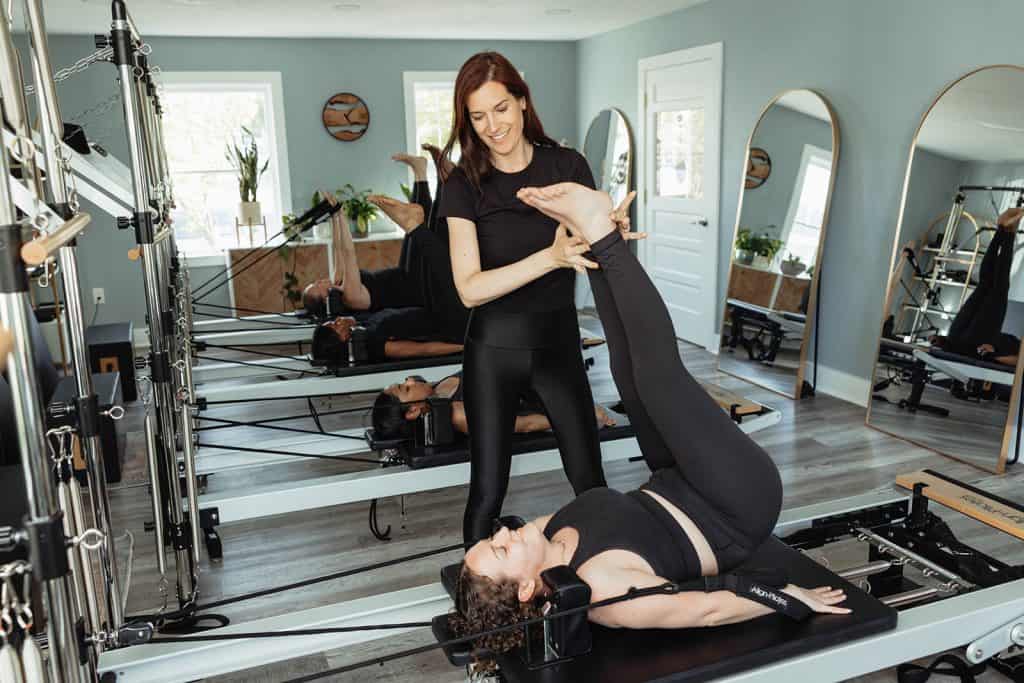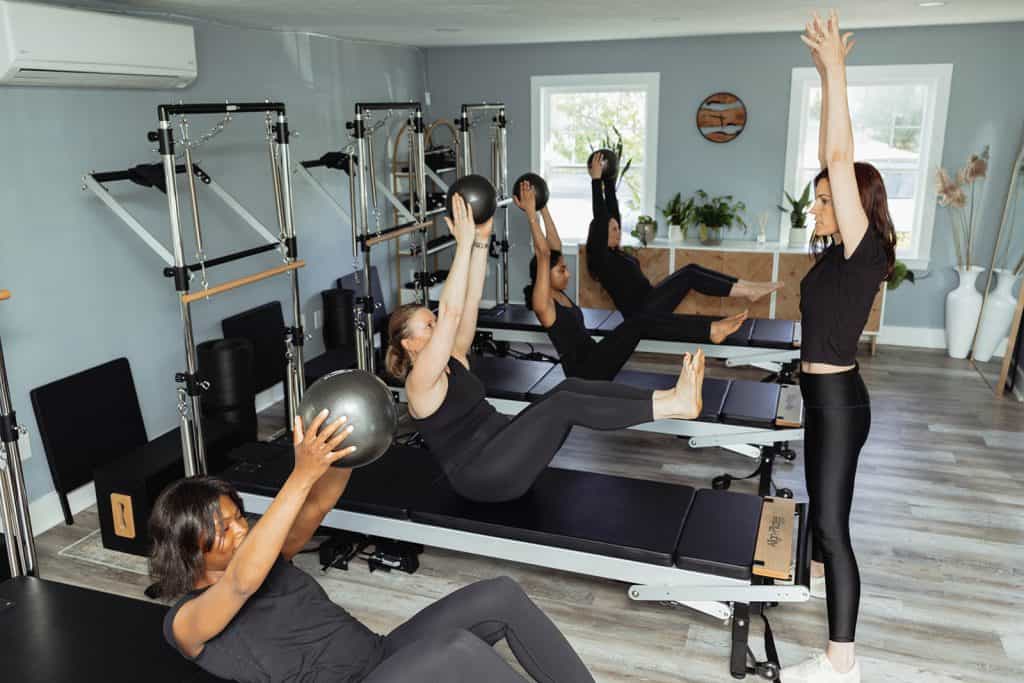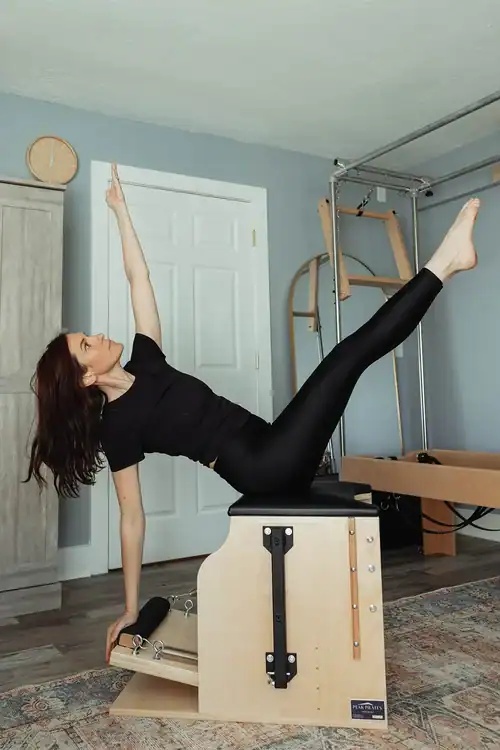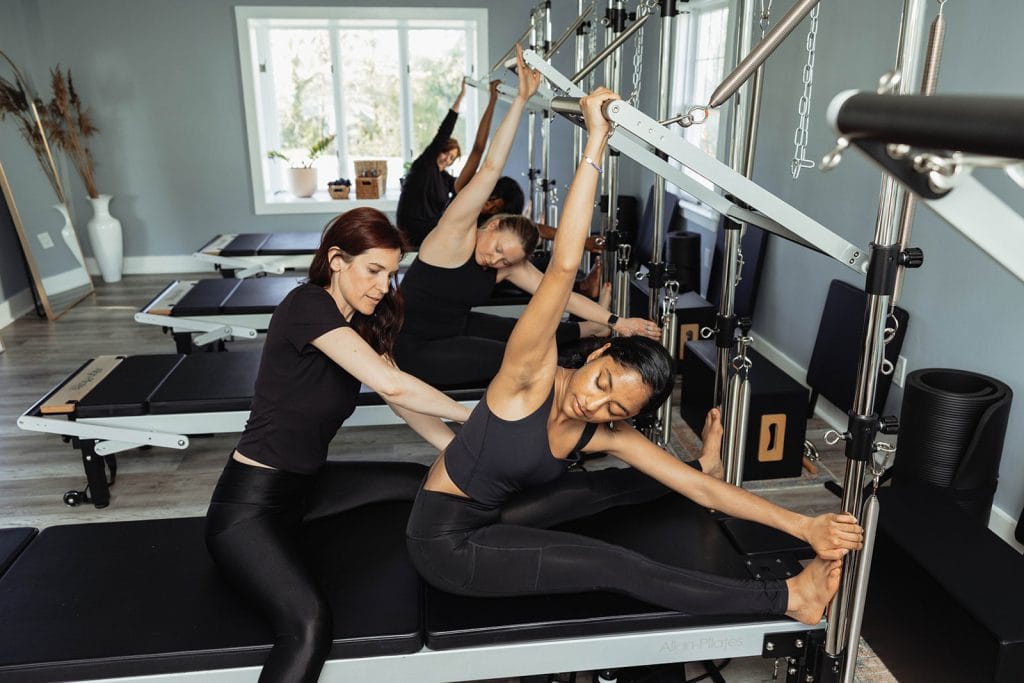Why Pilates Is a Game-Changer for Swing and Rotational Athletes
By Lora Ksieniewicz

Whether you’re swinging a tennis racquet, golf club, baseball bat, or pickleball paddle, the mechanics of rotational sports are demanding. These movements require a delicate balance of strength, precision, control, and range of motion—all rooted in a powerful center. After more than a decade of training professional, collegiate, and everyday athletes, I can confidently say that Pilates is one of the most underutilized yet transformative tools for improving performance and preventing injury in swing-based sports.
At its core, Pilates emphasizes eccentric strength training, a form of muscle contraction where the muscle lengthens while under tension.
Imagine slowly lowering a weight instead of simply lifting it. This controlled resistance builds long, lean muscle (thanks to the SAID principle in kinesiology—Specific Adaptation to Imposed Demand) and does more than just make you strong—it makes you resilient.

Most traditional training programs, especially those centered in the weight room, rely heavily on concentric contractions—where muscles shorten to create movement. Concentric work is excellent for developing power in prime mover muscles, but when overemphasized, it can create muscular imbalances. Athletes may become overly reliant on those large muscle groups for both power and stabilization, placing undue stress on joints. Over time, this can lead to friction, wear-and-tear, and even non-contact injuries like strains, tears, and reduced range of motion, especially as muscles hypertrophy and start pulling on origin and attachment points.
Pilates offers a powerful antidote to the imbalances often created by traditional training. On equipment like the Reformer and Tower, we use spring-based resistance to challenge the body in a unique way. When an athlete pushes the carriage or bar away, they’re using eccentric loading, where muscles lengthen under tension. Eccentric work allows you to handle more resistance than concentric (shortening) contractions, like one would do in the weight room or in traditional strength training.
Eccentric loading builds the most muscle fiber, recruits the highest amount of motor neurons (critical for neuromuscular control), and builds strength through the full range of motion, particularly at the end ranges where injuries often occur. Eccentric loading is the only type of muscle contraction shown to stimulate fibroblasts, which are cells that build and repair tendons, ligaments, and fascia. This leads to more resilient connective tissue—critical for injury prevention and joint stability, especially in high-impact or rotational sports. Eccentric loading supports the development of long, lean muscle fibers (per the SAID principle), rather than bulk.
That’s one half of an exercise. While athletes could let the springs pull them back in, the real benefit comes when they control the return. Instead of letting the springs pull them back, they resist. That kind of training engages supporting muscle groups (known as synergists) that don’t always get activated in typical workouts.

The Pilates Chair adds another dimension: it teaches athletes how to initiate movement from their core—what we often call the “powerhouse”—so their arms and legs can move more efficiently and precisely. This deep connection between the center of the body and the limbs is essential for fluid, powerful movement in any sport that requires rotation or control.
I’ve seen firsthand the difference this makes. One young baseball player came to me after a string of minor injuries—nothing catastrophic, but enough to chip away at his performance. Within six months of incorporating Pilates into his training, not only was his swing more fluid and powerful, but his pain disappeared.
More significantly, the Amherst College men’s soccer team, a championship-winning program, saw a measurable decrease in injury rates after we integrated eccentric strength and pliability training into their off-season conditioning.
These benefits aren’t limited to elite athletes. In fact, they’re perhaps even more critical for hobbyists—those of us who play tennis, golf, padel, or pickleball for fun but still want to perform well and stay injury-free. The demands of rotational sports don’t change just because it’s recreational. Precision, balance, rotation, and control are still essential—and Pilates delivers all of them while supporting joint health and longevity. In a world where early sport specialization is leading to repetitive-use injuries in younger and younger athletes, Pilates offers something rare: a whole-body, intelligent, sustainable way to train.
Whether you’re swinging for fun or for a title, it might just be your secret weapon.

About the Author
Lora Ksieniewicz is the passionate founder and owner of Aligned Pilates, operating two premier locations that bring the transformative power of Classical Pilates to Martha’s Vineyard and Florence Massachusetts. Her boutique studios offer an intimate, personalized approach to movement that goes far beyond traditional workouts.
With a deep roots in Yoga and Kinesiology, Lora has created spaces where physical strength, mental clarity, and spiritual balance converge. Her studios feature Align-Pilates C8-Pro Reformers, providing both group reformer classes and individual instruction in a private, focused environment.
In addition to her Pilates expertise, Lora extends her wellness philosophy through her two “Yoga on the Vine” studios. Through her writing and teaching, Lora continues to share her expertise on how Classical Pilates serves as a foundation for athletic performance, injury prevention, and overall life enhancement.
